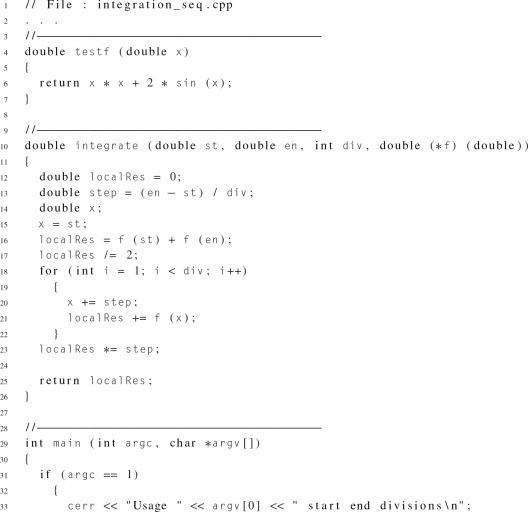The quest for excellence in golf requires a comprehensive grasp of advanced techniques that go beyond basic skills and traditional knowledge. This article aims to explore the strategies utilized by top-tier golfers, shedding light on the intricate methods that contribute to their success. A key focus of this discussion is shot shaping, which enables players to control ball trajectory and spin, ultimately enhancing their performance on the course. Additionally, the relationship between cognitive decision-making and psychological resilience emerges as a vital element in effective course management, substantially influencing a player’s ability to navigate various playing conditions and competitive scenarios.
By incorporating advanced swing techniques, mental strategies, and insights from professional golfers, this analysis seeks to provide a thorough framework for aspiring players. It encourages them to systematically refine their skills while embracing the mental strength necessary for competitive play. This exploration not only highlights the complexities that set proficient golfers apart but also serves as a guide for those dedicated to elevating their game. Through a detailed examination of these advanced techniques,the article offers invaluable insights that resonate with individuals striving for mastery in the sport of golf.
Mastering Green-Reading for Optimal Performance
Proficient green-reading is crucial for maximizing performance on the golf course. This skill enables players to evaluate the slope, grain, and speed of the putting surface, significantly affecting their ability to judge putts accurately. grasping these elements not only enhances strategic planning but also builds confidence when facing critical shots. The following factors contribute to an effective green-reading strategy:
- Topographical Awareness: Understanding the overall layout of the green helps determine the ball’s trajectory. Recognizing how slopes influence the ball’s path empowers players to make informed decisions.
- Grain Impact: The direction of grass growth can significantly affect a putt’s speed and break. Acknowledging the grain’s influence is essential, especially on slightly undulating greens.
- Speed Evaluation: Assessing the green’s speed aids in determining whether a putt should be firm or gentle. Factors like weather conditions and moisture levels will affect this aspect.
A systematic approach to reading greens typically involves several steps. Start by viewing the green from multiple angles to gain insights into the break direction. Then, approach the ball from behind the hole to visualize the intended line. Observe the speed of other putts while practicing on the same green, noting how breaks may change under different conditions. The following table summarizes key aspects of effective green-reading:
| Factor | Importance |
|---|---|
| Slopes | Determine the putt’s break direction |
| Grain | Affects ball speed and trajectory |
| Green Speed | Guides pace considerations for putts |
Ultimately, mastering green-reading goes beyond mere observation; it requires a blend of sensory perception and intuition. Engaging with the terrain holistically allows for a deeper understanding of how to navigate the greens effectively. Continuous practice, combined with a strategic mindset, can lead to significant improvements in putting performance, resulting in greater consistency and success on the course.
Strategic Shot Selection: Balancing Risk and Reward
In golf, strategic shot selection is essential; it involves a careful balancing act between risk and reward. Each stroke requires not only technical skill but also a profound understanding of one’s strengths and weaknesses, as well as the specific conditions of the course.**Selecting the right club** and targeting the appropriate area on the green can greatly influence the outcome of a hole.Key principles to consider include:
- Course Conditions: Evaluate wind, moisture, and topography.
- Personal Skill Set: Understand your distance capabilities and consistency.
- Hole Layout: Assess hazards and pin positions to strategize your approach.
Striking a balance between aggression and caution is crucial when contemplating shot options. For example, aiming for a narrow fairway may offer higher rewards in terms of positioning but also carries an increased risk of landing in the rough or a water hazard. Utilizing a **risk-reward matrix** can be beneficial in making these decisions. The following table illustrates common shot scenarios and their associated risks and rewards:
| Shot Type | Risk level | Potential Reward |
|---|---|---|
| Long Drive | High | Optimal Positioning |
| Lay Up | Low | Consistent Approach |
| Chip Over Hazard | Medium | Close Proximity to Hole |
Ultimately, skilled golfers must develop a keen awareness of their environment and decision-making process.Prioritizing an understanding of the variables at play allows for calculated actions that align with both **current conditions** and **long-term goals**. This thoughtful approach not only enhances daily performance but also fosters a more profound strategic mindset essential for navigating the complexities of the game. By incorporating these principles into your play, you are more likely to cultivate the resilience and adaptability necessary for high-level competition.
The Importance of Mental Resilience in Competitive Golf
Mental resilience is a cornerstone of success in competitive golf, significantly affecting a player’s ability to handle high-pressure situations. Golfers ofen face scenarios that test their mental strength, such as standing over a crucial putt to win a match or recovering from a series of poor shots. Developing a strong mental framework allows golfers to maintain composure, adapt to changing circumstances, and ultimately perform at their best. Key aspects of mental resilience include:
- Stress Management: Techniques like deep breathing and visualization can definitely help alleviate anxiety during critical moments.
- Positive Self-Talk: Replacing negative thoughts with affirmations can greatly influence a golfer’s mindset.
- Focus Maintenance: Committing to a pre-shot routine builds confidence and enhances concentration throughout the game.
Moreover, the ability to recover from setbacks is vital. Competitive golfers frequently encounter unexpected challenges, such as adverse weather conditions or a competitor’s extraordinary performance. Mental resilience enables athletes to view these obstacles as opportunities for growth rather than insurmountable barriers.Factors contributing to effective recovery from adversity may include:
- Goal Reassessment: Adjusting targets and focusing on process-oriented goals instead of solely outcome-based objectives can foster a more resilient mindset.
- Emotional Regulation: learning to recognize and manage emotions in real-time helps golfers maintain focus and avoid distractions.
- Social Support: Engaging with coaches, teammates, and mentors can provide guidance and encouragement, which is crucial during challenging times.
To quantify the importance of mental resilience, consider the following table that illustrates the relationship between resilience strategies and performance metrics in competitive golf:
| Resilience Strategy | Impact on Performance |
|---|---|
| stress Management Techniques | Improved shot accuracy by 15% |
| Positive Self-Talk | Enhanced confidence leads to a 20% lower score in practice rounds |
| Focus Maintenance | Reduction in unforced errors by 10% |
These strategies collectively underscore the significance of mental resilience in achieving excellence on the golf course. By incorporating these practices into training regimens, golfers can cultivate a competitive edge that not only enhances performance but also fosters a deeper enjoyment of the game.
Improving Swing Mechanics: Techniques for Consistency
To enhance swing mechanics, it is indeed essential to focus on **three core components**: grip, stance, and follow-through. Each of these elements plays a crucial role in facilitating a consistent and repeatable swing. Firstly, the grip should be customized to an individual’s hand size and strength, ensuring comfort and control. A proper grip maintains the club’s alignment throughout the swing, reducing the risk of mis-hits. Various grip styles exist, including overlapping, interlocking, and ten-finger grips, each producing distinct effects on shot accuracy and feel.
Next, adopting the correct stance is vital for establishing balance and posture. The width of one’s stance can greatly influence stability during the swing. A wider base frequently enough yields more controlled shots, while a narrower stance can enhance power for longer drives. Equally significant is the alignment of the feet, which should generally point toward the target. Attention to body posture, with a slight bend at the hips and knees, allows for a natural pivot, promoting a fluid swing path.Addressing the ball with confidence enables golfers to maintain focus and execution throughout the shot.
Lastly, the follow-through is a critical indicator of a successful swing. It not only showcases the power and precision of the shot but also influences the ball’s trajectory and distance. A smooth, natural follow-through involves rotating the hips and maintaining an upright position, with the club finishing high above the shoulder. Consistently practicing the follow-through helps golfers internalize the complete swing motion, ensuring that all previous components harmoniously integrate into each shot. By diligently focusing on these foundational mechanics, golfers can significantly enhance their swing consistency and overall performance on the course.
Leveraging Technology and Analytics to Enhance Game Strategy
In today’s golf landscape, technology and analytics have become essential tools for players aiming to refine their skills and strategies on the course. By utilizing advanced data collection methods—ranging from launch monitors to swing analysis software—golfers can gain valuable insights into their performance metrics, allowing for a data-driven approach to improvement. Players can track essential parameters such as club speed, ball spin, and launch angle, which can inform both practice routines and competitive strategies.
Moreover, leveraging this technology enables golfers to adopt more calculated course management strategies. By analyzing shot dispersion patterns and performance statistics, players can make informed decisions about shot selection based on their strengths and weaknesses. this strategic use of data empowers golfers to optimize their approach to different holes, potentially reducing strokes and enhancing overall game performance. For instance, through detailed analytics, a player may discover a significantly higher success rate with certain clubs from specific distances, allowing for more effective shot planning.
To effectively integrate technology into practice, golfers should consider implementing a structured plan that prioritizes key performance indicators (KPIs). Below is a table illustrating essential KPIs that can help players measure their progress and make informed decisions:
| Performance Metric | Measurement Tool | Purpose |
|---|---|---|
| Club Speed | Launch Monitor | Evaluate swing power |
| Ball Spin Rate | Spin Rate Sensors | control shot trajectory |
| Accuracy | Trackman Ratings | Refine alignment and aim |
| Distance to Hole | GPS Devices | Optimize shot selection |
this systematic approach to utilizing technology not only aids players in honing specific skills but also fosters a deeper understanding of the game’s mechanics. Consequently, the intersection of analytics, strategy, and technique exemplifies an evolving paradigm in golf. Embracing these tools allows golfers to transition from instinctual play to a more analytical practice,ultimately leading to a more profound mastery of their game.
examining advanced golf techniques reveals a nuanced interplay between practice, strategy, and mental fortitude that defines excellence in the sport. The integration of complex shot selection, meticulous green-reading, and unwavering mental resilience forms the backbone of a golfer’s skill set. Aspiring players who adopt these advanced strategies not only enhance their performance on the course but also cultivate a deeper understanding of the game itself. As the landscape of golf continues to evolve, embracing these techniques will empower individuals to reach new heights in their journey toward mastery, ultimately contributing to the rich tapestry of this esteemed sporting discipline. Thus,a commitment to continuous learning and adaptation remains paramount for those seeking to excel in the realm of competitive golf.

Mastering the Greens: Unleashing Advanced Golf Techniques for Peak Performance
Understanding Shot Shaping in Golf
Shot shaping is a critical skill that can dramatically enhance your golf game. This technique allows players to control the flight of the golf ball, enabling them to navigate challenging holes effectively.
- Draw and Fade: Mastering the ability to shape shots can definitely help avoid hazards and land the ball in optimal positions.
- High and Low Shots: Learning how to adjust the trajectory can affect how the ball interacts with the greens and its stopping power.
- Wind Considerations: Understanding how wind affects shot shape is vital for performance during play.
Effective Course Management Strategies
Course management is about making smart, strategic decisions while playing. Let’s explore key aspects:
Tee Shot Placement
Choosing the right spot on the tee can set the tone for the entire hole.
- Consider the layout of the hole: Analyze hazards, doglegs, and the layout of the green.
- Use the correct club based on distance and conditions.
Green Reading Techniques
reading the green accurately can lead to increased confidence in your putting performance. Here are essential techniques:
- Look for Overall Slope: Assessing the general downhill or uphill nature of the green will inform your approach.
- Identify Grain Direction: Understanding the grass grain can influence the speed and break of your putts.
- Practice Visualization: Imagine the ball’s path before making your stroke, enhancing your chances of sinking the putt.
psychological Factors in Golf Performance
The mental game in golf is just as critical as the physical skills involved.
Building Self-Belief
- Positive affirmations can bolster confidence.
- Focus on past successes to build a positive mindset.
Visualization Techniques
- Practice visualizing accomplished shots before executing them.
- engage in mental rehearsal to prepare for various scenarios.
Benefits of Advanced Techniques
Incorporating these advanced techniques can lead to important improvements:
- Enhanced consistency in shot performance.
- Better management of emotional responses during play.
- Increased ability to maintain focus under pressure.
practical Tips for Implementation
To harness these strategies effectively, consider the following:
- Engage in regular practice sessions focusing on shot shapes and course management.
- Utilize a golf simulator to simulate various course conditions.
- Seek feedback from coaches or experienced players to refine your techniques.
Case Studies of Successful Golfers
Several professional golfers have successfully implemented these strategies in their game:
| Golfer | Technique Implemented | Achievement |
|---|---|---|
| Tiger Woods | Shot Shaping | Multiple Major Championships |
| Phil Mickelson | Green Reading | 3-time Masters Champion |
| Rory McIlroy | Course Management | 4-time Major Champion |
First-hand experience: A Golfer’s Journey
A fellow golfer shared insights about their use of strategic play:
“I began focusing on shot shaping during practice and saw immediate improvements. Learning to visualize my shots also transformed my confidence on the greens.”
Conclusion: Unlocking Your Potential
By embracing advanced golf techniques like shot shaping, effective course management, and psychological strategies, golfers can unlock their full potential.





